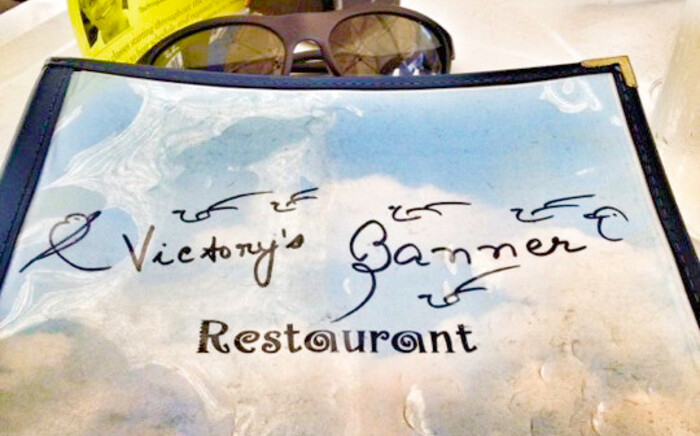Sri Chinmoy's music and concerts
The Language of the Soul
Sri Chinmoy was the featured performer at 777 concerts on six continents — from Argentina to Russia to Zimbabwe; from New York's Carnegie Hall to China's Great Wall; from the Carrousel du Louvre (right) to The Vatican. Sri Chinmoy saw music as a universal language of the heart, a potent force that dissolves barriers of race and religion and unites humanity into one world-family.
Through the power of music, he drew tens of thousands of people together in an unforgettable experience of inner and outer harmony for a period extending more than 20 years. He gave command performances for President Gorbachev of the Soviet Union, United Nations Secretary-General Javier Pérez de Cuéllar, President Havel of the Czech Republic, President Tabone of Malta, President Kovac of Slovakia, President Premadasa of Sri Lanka and President Trajkovski of Macedonia.
Compositional outpouring
In an odyssey that has spanned four decades, Sri Chinmoy composed a monumental total of 13,000 songs in his native Bengali and 7,000 in English. Since 1964 Sri Chinmoy steadily increased his compositional outpourings decade by decade, composing an average of nearly 500 songs per year — many hauntingly prayerful, others powerfully dynamic.
Setting his own words to music rapidly and spontaneously, Sri Chinmoy composed dozens of songs in a single session — from two lines to nearly two hundred lines — using his native Bengali notation. Yet he also composed with great care and attention to nuance and articulation of specific vocal slides that seem to pull directly from the heart strings with throbbing intensity. These add overall richness, subtlety and specific attributes to each song.
What Sri Chinmoy does is God-given. He has a tremendous, a fantastic creative urge.
Ravi Shankar, Legendary Sitarist
11 October 2002
Both simple and subtle, his compositions invoke an atmosphere of unique serenity. The essence of ancient Indian ragas — infinitely intricate, non-harmonic melodies and rhythms — are conveyed in a single melody line easily accessible to the modern ear. Raga, a word rich in connotations, essentially means ‘invocation’, or the invoking of a particular mood. In Sri Chinmoy’s case, these moods express the vast reaches of the aspiring human heart and soul that seemingly have no end. Each tone, or svara means ‘that which shines by itself’, and his melodies draw forth the unique colouring of each note in a succession of soulful, luminous invocations of great depth.
Sri Chinmoy adhered to the traditional purity of the chant without harmonic embellishment or orchestral complexity, thus maintaining an unaffected style of simplicity and authenticity. Possessed of an acute rhythmic sense, his compositions can be both full of precise, lively timings or drawn out to a near droning pace. Each song is an unusual blend of the ancient and contemporary, East and West, alternating between modern major intervals and exotic, modal contours spanning two octaves. The lyrical beauty, charm and haunting qualities of his music leave a lingering resonance in the listener’s heart long after the concert ends.
- Over 23,000 songs composed: 13,000+ Bengali / 7,000+ English / 180 Sanskrit / 33 French
- Sri Chinmoy composed an average of nearly 500 songs per year
- The most English songs Sri Chinmoy composed at one time was 300 on 28 November 1976 in 6 hours. With two rest breaks, each set of 100 took 1.5 hours to compose.
- The most Bengali songs Sri Chinmoy composed at one time was 201 on January 9, 1998 in 4 hours.
- The most songs Sri Chinmoy composed in a year was 2,700 in 1995.
- Over 200 recordings on various media
Tribute songs
 A number of these compositions are tribute songs dedicated to world luminaries that have been performed specially for them during concerts and in private meetings by the Sri Chinmoy International Choir. Such world figures include President Mikhail Gorbachev, President Nelson Mandela, UN Secretaries-General Kurt Waldheim, Kofi Annan, Pérez de Cuéllar and Mother Teresa; music greats Ravi Shankar, Paul Horn, Leonard Bernstein, Yehudi Menuhin, Roberta Flack, Sting, Quincy Jones and Narada Michael Walden; cultural greats, Jane Goodall, Rory Kennedy, Peter Max; and sports greats Muhammad Ali, Billie Jean King, Carl Lewis, Bill Pearl and Frank Zane.
A number of these compositions are tribute songs dedicated to world luminaries that have been performed specially for them during concerts and in private meetings by the Sri Chinmoy International Choir. Such world figures include President Mikhail Gorbachev, President Nelson Mandela, UN Secretaries-General Kurt Waldheim, Kofi Annan, Pérez de Cuéllar and Mother Teresa; music greats Ravi Shankar, Paul Horn, Leonard Bernstein, Yehudi Menuhin, Roberta Flack, Sting, Quincy Jones and Narada Michael Walden; cultural greats, Jane Goodall, Rory Kennedy, Peter Max; and sports greats Muhammad Ali, Billie Jean King, Carl Lewis, Bill Pearl and Frank Zane.
Sri Chinmoy has also composed songs for international events, such as the American Bicentennial celebration, the Olympics and World Masters Games. His extensive travels took him to many countries of the world, and he composed 200 songs celebrating the uniqueness of the various member nations of the world-family. Many of these national songs have been performed by schoolchildren and by choirs in these countries and at the United Nations.
Each of the 50 US states and individual cities, (including New York, Philadelphia and cities worldwide such as Bangkok, Berlin, Dhaka, Hiroshima, Hong Kong, Moscow, Ottawa and Tokyo), have been captured in song in this unique undertaking. Sri Chinmoy’s love for sport also expressed itself in songs about running, walking, bicycling, swimming, tennis and weightlifting.
Musical Multiplicity
Sri Chinmoy performed his compositions typically on over 20 – 30 instruments, specializing in the esraj, cello, Western echo flute, Indian harmonium, piano and violin. Added to this are any number of unique string and woodwind instruments, including the exotic: a New Zealand triple bamboo gourd flute with added drones, a Chinese gong, a Moroccan cittern, an African steel drum, as well as modern electronic instruments like the vibraphone, a Midi keyboard tuned to simulate the Japanese koto, samisen and shakuhachi sounds, Viscount digital pipe organ and any number of tubular bells and chimes. He performed on as many as 170 such instruments in one concert.
This is the most powerful and soul-stirring music I have ever heard. It has entered right inside me and left me feeling totally purified.
Clarence Clemons
Numero Uno Saxophonist and member of Bruce Springsteen's E Street band, 13 April 1987
During his instrumental performances, Sri Chinmoy often began with a ‘proem’, brief preludes of spontaneous musical runs or flourishes that bring forward the inner tonality of an instrument that flows uninterrupted into melody. The results on the echo flute are rich, elevating and serene. Sri Chinmoy also performed extemporaneously for longer periods, improvising freely on other woodwind and stringed instruments without any recognizable melody but not yet unleashing the thunderous grandeur of his keyboard improvisations. Weaving in and out of these various styles are the occasional traditional Indian ragas of repetitive but unusual scales. He also loved to ‘pluck’ on stringed instruments, play staccato on the winds, or drum playfully on the marimba in a more lively, percussive style with childlike simplicity and joy.
Sri Chinmoy himself is music…Sri Chinmoy’s music is a vehicle for the highest spiritual energy. It is very healing, an experience very deep within my heart and far beyond words.
Paul Horn, World-renowned Flautist
2 May 2003
Sri Chinmoy’s voice is strikingly stirring. He sang his compositions both in Bengali and English, a cappella or with keyboard accompaniment (usually the harmonium, an Indian bellowed keyboard instrument). Unique to Sri Chinmoy’s performance style is his singing with bowed stringed instruments, such as the viola, cello and esraj. On rare occasions he sang extemporaneously in an Indian classical tradition. Choosing from his thousands of compositions for each performance, he sang up to 400 compositions during a single concert.
Keyboard, Violin and Esraj Improvisations

In 1987 Sri Chinmoy began improvising on the piano, synthesizer and pipe organ to considerable international acclaim. Unbound by typical compositional restraints, these extemporaneous performances are a tidal wave of sound, a vast orchestral statement of great power. Numerous classical, jazz and contemporary musicians have expressed awe at Sri Chinmoy's technical virtuosity, radical and uncanny rhythmic control and explosive sound.
Sri Chinmoy’s pipe organ improvisations will prove to be one of the most powerful, ecstatic and spiritually uplifting performances anyone is ever likely to encounter. Adventurous listeners who are inwardly quiet and fully present will discover the music of genius.
Pulse Magazine, USA
 He performed these works at some of the world's most time-honoured and sacred venues, including St. Peter's Basilica, The Vatican, Notre Dame Cathedral, Westminster Abbey, Windsor Chapel, St. John the Divine, West Point (right) and the Sydney Opera House.
He performed these works at some of the world's most time-honoured and sacred venues, including St. Peter's Basilica, The Vatican, Notre Dame Cathedral, Westminster Abbey, Windsor Chapel, St. John the Divine, West Point (right) and the Sydney Opera House.
At the start of the new millennium, Sri Chinmoy added violin and esraj improvisations to his concert repertoire. The esraj in fact became Sri Chinmoy's signature instrument. Virtually unknown to the West, the esraj originated in centuries past in North India, has four main playing strings that are bowed and 20 sympathetic strings that vibrate simultaneously. Ancient musicians called this phenomenon jivari (‘soul’), likening the resonance of the strings to an inner stirring. In a unique blend of traditional melodic and contemporary improvisational performance, Sri Chinmoy slid seamlessly from fret to fret in virtuoso style as his bow drew out the resonant depth and particularly haunting intensity of the main strings. He often maintained a bass line drone that further deepened the reverberating overtones and added to the timeless quality of an unbroken and unforgettable performance.
Stories
First-hand experiences of meditation and spirituality.

My life with Sri Chinmoy
Namrata Moses New York, United States
So much longing, for something
Pushpa rani Piner Ottawa, Canada
A Mountain Meditation
Jogyata Dallas Auckland, New Zealand
My Room
Preetidutta Thorpe Auckland, New Zealand
Sri Chinmoy meets St. Peter
Paramita Jarvis Kingston, Canada
If a little meditation can give you this kind of experience...
Pragya Gerig Nuremberg, Germany
'I could find out myself, but it was so much easier asking your soul'
Mridanga Spencer Ipswich, United Kingdom
'Always say things in such a way as to inspire people, not discourage them'
Pradhan Balter Chicago, United States
A Flame in my Heart
Adesh Widmer Zurich, Switzerland
10-Day Race: Staring into the Infinite
Patanga Cordeiro São Paulo, Brazil
Time seemed to freeze
Brahmata Michael Ottawa, Canada
'Christ has stolen her heart and brought it now to me'
Dodula and Gunthita Zurich, Switzerland
My Life with Sri Chinmoy: a book
Tejvan Pettinger Oxford, United KingdomSuggested videos
interviews with Sri Chinmoy's students

Self-transcendence in meditation
Kailash Beyer Zurich, Switzerland
My typical day
Pranlobha Kalagian Seattle, United States
Running the world's longest race
Jayasalini Abramovskikh Moscow, Russia
2 things that surprised me about the spiritual life
Jayasalini Abramovskikh Moscow, Russia
Starting a spiritual café
Toshala Elliott Auckland, New Zealand
A direct line to God
Vajra Henderson New York, United States
Sri Chinmoy's vision of the Peace Run
Harita Davies New York, United States
Except where explicitly stated otherwise, the contents of this site are licensed under a Creative Commons Attribution-NonCommercial-NoDerivs 3.0 Unported License. read more »
SriChinmoyCentre.org is a Vasudeva Server project.





